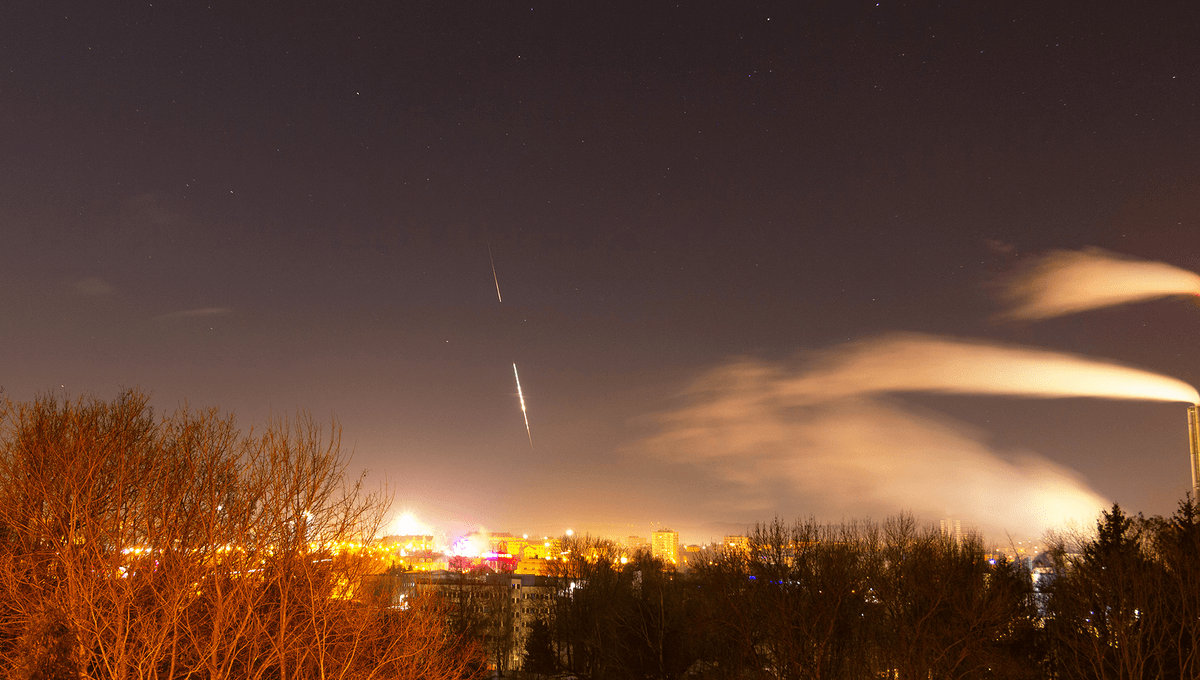
The hunt is on to find meteorites from an object that hit the Earth’s atmosphere 100 kilometers (62 miles) west of Berlin over the weekend. Although bits of rock would be most prized, scientists are also keen to collect as many photographs of the descent of the meteor 2024BX1 as possible.
Central Europeans awake at the right time were given warning of the arrival of a 1-meter (3-foot) wide asteroid in the early hours of Sunday morning. This probably represents the most populated area for an anticipated impact by a space rock yet, although the timing meant only night owls saw it.
Until recently, meteors came entirely out of the blue (or the black, depending on the time of day/night). However, increasing observations of the skies mean we sometimes spot small asteroids shortly before they hit the atmosphere, creating the opportunity to issue alerts. One such case achieved meme-worthy status when the incoming object was described as being the size of half a giraffe.
However, that space rock went down off the coast of Iceland, leaving no chance of finding debris and a very small pool of potential observers. It’s inevitable that with most of the planet covered by oceans and much of the rest barely populated desert even when we predict an object’s arrival few will get to witness it.
A subsequent smaller asteroid burned up over the English Channel last year, ensuring no one was directly beneath it, but thrilling photographers from the heavily populated coasts.
The 2024BX1 meteor was seen from eastern Germany, Poland, and Czechia. Had it been a few hours earlier it might have been seen by millions. Instead, it arrived at 1:32 am local time – not the best time to attract crowds, particularly with overnight temperatures well below zero.
Nevertheless, some people were onto it.
Like last year’s event, the prediction came from prolific minor planet hunter Krisztián Sárneczky, who noticed the flicker in his images.
Sárneczky’s alert, shared to a wider audience by the International Meteor Organization and NASA Asteroid Watch gave a 75-minute warning for those who were awake and online. The IMO even provided anyone too far away to view the event themselves with links to webcams, some of which turned out to be pointed appropriately.
Research into these events always benefits from more data, and anyone who saw, or better still recorded, the meteor, is invited to report it here.
Space rocks usually need to be bigger than this for pieces to survive the atmosphere and reach the ground. However, there has been speculation online that the steep angle of entry and low velocity relative to Earth might have enabled pieces to survive. If so, hunters probably have until the next snowfall to maximize their chances.
If any pieces are found, it would be the second fresh asteroid discovery of the year. On December 29, almost a hundred people across four American states reported seeing a fireball. Their assistance, along with CCTV recordings and the AllSky7 video network allowed meteorite hunters to pinpoint the location near the California/Arizona border. On New Year’s Day, three fragments weighing 450 grams (16 ounces) were collected from the Arizona desert.
Source Link: Rare 75-Minute Warning Issued Before Asteroid Hit Earth's Atmosphere Above Germany